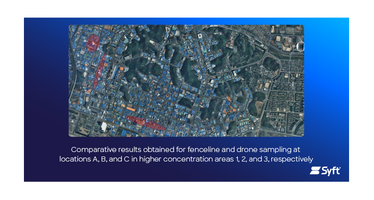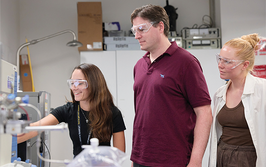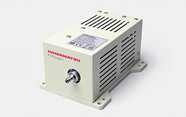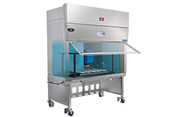The Mobile Sift-Ms Laboratory
Part 2: Pollution Source Identification

contributed by Syft Technologies |

Abstract
Tracing volatile pollutants back to their emission source can be difficult in industrial parks. By utilizing a combination of fenceline monitoring with a mobile laboratory equipped with selected ion flow tube mass spectrometry (SIFT-MS) instrumentation together with drone sampling, individual emission sources can be sampled and analyzed rapidly on site. Using an example from the Republic of Korea (South Korea), this application note illustrates the effectiveness of onsite broad-spectrum, high-specificity SIFT-MS analysis combined with drone sampling in the identification of pollution sources.
Introduction
Utilization of SIFT-MS mobile laboratories for characterization of volatile organic pollutants in industrial complexes was described in Part 1, both for stationary and on-the-move monitoring. Such monitoring is necessary because it identifies the volatile organic compound (VOC) emissions associated with specific localities in the complex and which may need to be targeted during a pollution incident. On such occasions, it is important that the specific source of pollution is important for resolving the pollution issue as quickly as possible and holding those responsible for it accountable.
Given the transient nature of many incidents, it can be difficult to identify the source of pollutants using conventional approaches involving time-averaged sampling at site and analysis at an off-site laboratory. Moreover, in high-density industrial complexes, there may be many potential sources for the pollutant(s). Feedback is necessarily slow when utilizing regulatory chromatographic methods.
Log in or register to read this article in full and gain access to The Analytical Scientist’s entire content archive. It’s FREE!

















